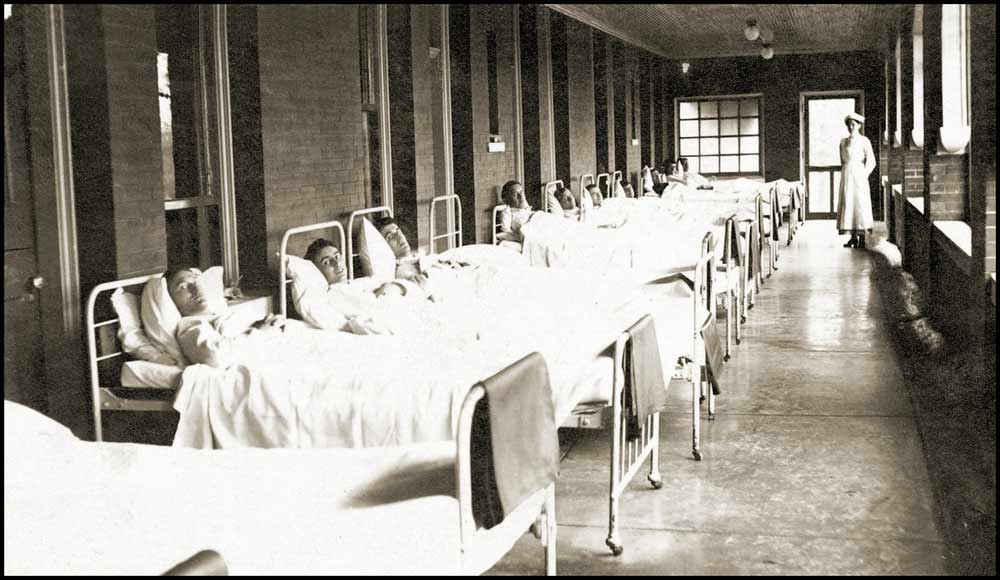First Recovery Groups
Today recovery groups in the form of peer-based, 12-Step gatherings are one
evidence-based component of effective addiction treatment. What many people do not know is that this model goes much further back than the start of Alcoholics Anonymous (AA) in the 1930’s. Long before the recovering alcoholic, Bill Wilson, launched AA’s 12 Steps, some Native American tribes were promoting abstinence from alcohol through mutual aid societies, or “sobriety circles,” as early as the 1750’s. Typically presided over by a tribal chief, these groups reportedly focused on connecting alcoholics to a larger community that could support them in sobriety. (A similar, peer community-based structure describes the current-day culture of AA and other 12-Step groups.)
First Recognition That Alcoholism Is a Disease
Similarly, the idea that
alcoholism is a disease — the mainstream understanding among today’s medical and scientific communities — has roots that extend all the way back to the year 1784.
That was when Dr. Benjamin Rush, in a publication titled
An Enquiry into the Effects of Spiritous Liqours upon the Human Body, and Their Influence upon the Happiness of Society, chronicled his observations of the medical effects of the “continued use” of hard liquor. In one excerpted example, Dr. Rush noted that these “spirited liquors” dispose the body “to every form of acute disease,” and “excite fevers in persons predisposed to them from other causes.”
Dr. Rush published the first rough pathology of alcoholism in America, although it was a Swedish doctor, Dr. Magnus Huss, who actually named the disease “alcoholism” in 1849.
First Addiction Treatment Centers
The year 1864 saw the first, admittedly more primitive incarnation of today’s addiction treatment centers: the “New York State Inebriate Asylum” was the first of a series of such asylums to open in the U.S., treating alcoholism and addiction to drugs like opium, morphine, cocaine, chloral, ether and chloroform, according to the writer and recovery expert, William White, in his book,
Slaying the Dragon: The History of Addiction Treatment and Recovery in America. (White’s book inspired a helpful timeline that documents many more key events in America’s history of addiction treatment and recovery, warts and all.)
First Addiction Counselors and Therapists
In 1906, the Emmanuel Clinic in Boston introduced the practice of lay therapy in treating alcoholism. These lay psychotherapists took a spiritual and psychological approach to addiction recovery. They were precursors to today’s addiction counselors, according to White, in the publication
Addiction Counseling Review — but they were also therapists who paved the way for using psychotherapy to treat addiction. Today, the widespread use of various evidence-based therapies for treating drug and alcohol addiction validates the Emmanuel clinicians’ original hunch that addiction benefits from spiritual and psychosocial therapeutic interventions.
First Government Involvement in Furthering Addiction Treatment
The first federal “narcotics farm” opened in 1935. The facility reportedly functioned as a prison, rehab and research center. “Its mission was threefold: to understand the how’s and why’s of drug addiction, rehabilitate persons addicted to drugs completely, and find a permanent cure,” according to the same report by the Institute for Research, Education and Training in Addictions (IRETA). People could check themselves in if they wanted to, and residents of the farms went by the nomenclature of “patient” not “prisoner.”
But what made narcotic farms a significant moment in the history of addiction treatment, according to White, was this: These part-prison, part-rehab, part-research facilities signified the first time in U.S. history that the federal government got involved in advancing addiction research and treatment.
In the years to come, the federal government would take many other steps to advance addiction treatment and addiction science research. Among the most notable of these milestones were:
- The creation of the first National Advisory Committee on Alcoholism and the National Center for the Prevention and Control of Alcoholism, a division of the National Institutes of Health (NIH), in 1965
- The Comprehensive Alcohol Abuse and Alcoholism Prevention Act, which provided for the establishment of the National Institute on Alcohol Abuse and Alcoholism (NIAAA), in 1970
- The Drug Abuse Treatment Act of 1972, which led to the creation of the National Institute on Drug Abuse (NIDA) two years later
- The creation of the “Center for Substance Abuse Treatment” (better known today as the Substance Abuse and Mental Health Services Administration (SAMHSA) in 1992, whose mission is to improve the quality and delivery of substance abuse treatment
First Medication-Assisted Treatment (MAT) for Addiction
Medication-Assisted Treatment (MAT) in Florida employs doctor-prescribed medications to treat addiction symptoms, such as withdrawal and cravings. In the 1940’s, the drug, disulfram (Antabuse), became an early (if not the earliest) incarnation of MAT. Disulfram was used as an adjunct treatment for alcoholism. Naltrexone, another MAT for alcoholism, followed roughly 50 years later, opening the door to a whole new generation of medications that serve as adjunct treatments for substance use disorders (SUDs). Today, expanding access to MATs like Suboxone is a top U.S. policy priority in the fight against America’s opioid epidemic.






